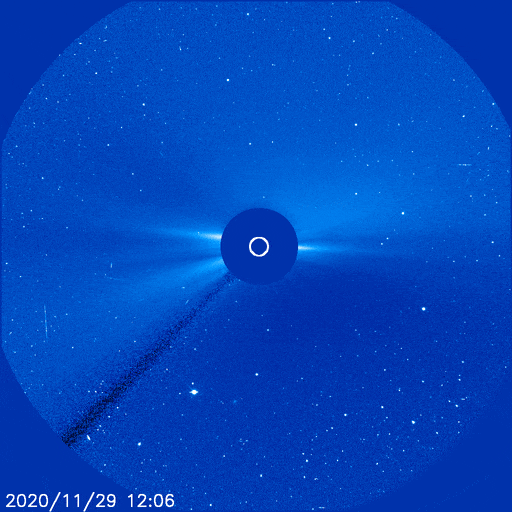This news is classified in: Aerospace Communications Space
Apr 2, 2024
Europe’s newest rocket soon launches, taking with it many space missions each with a unique objective, destination and team at home, cheering them on. Whether launching new satellites to look back and study Earth, peer out to deep space or test important new technologies in orbit, Ariane 6’s first flight will showcase the versatility and flexibility of this impressive, heavy-lift launcher.
CURIE, the CUbesat Radio Interferometry Experiment from NASA, is one such payload launching on Ariane 6’s first flight. CURIE will measure radio waves coming from the Sun and other radio sources in the sky. Such waves must be measured in space, as they are absorbed by Earth’s ionosphere – a region extending 30 to 600 miles above Earth’s surface composed of ionized (charged) gases and created as solar radiation interacts with the upper atmosphere.
CURIE is made up of two spacecraft that will launch bolted together as one, later separating into two in orbit. From their separate vantage points, the satellites CURIE A and B will make it possible to measure the same radio waves from two locations at the same time. Using the technique of radio ‘interferometric analysis,’ the origin of detected radio waves can be reconstructed.
The principal science objective for CURIE is to use radio ‘interferometry’ to study radio burst emissions from solar eruptions, such as flares and coronal mass ejections in the inner heliosphere. These events drive space weather, its influence being felt on Earth and other planets when they occur, in increasing auroral activity and geomagnetic effects.

by Component (Antenna, Bracket, Shield, Housing and Propulsion), Satellite Mass (Nano and microsatellite, small satellite, medium and large satellite), Application and Region
Download free sample pagesCURIE will be able to determine the location and size of radio burst source regions and then track their movement outward from the Sun.
Such a space-based radio interferometry observatory has long been envisioned, in orbit around the Earth or Moon, or on the Moon’s far side. CURIE will be the mission first of its kind to measure radio waves in the 0.1 – 19 MHz frequency range from space. It will serve as an experimental platform and pathfinder in the development of new space-based radio observation techniques important for our understanding of the heliospheric space weather environment, and the Sun’s impact on the planets of the Solar System.

29 November 2020 coronal mass ejection
Beyond its important science objectives, CURIE will also prove that the concept of a dedicated space-based interferometer can be realised using relatively cheap CubeSats.
Ariane 6 is planned to launch in June-July 2024. It follows the hugely successful Ariane 5, Europe's principal rocket for more than a quarter century, flying 117 times between 1996 and 2023 from Europe's Spaceport in French Guiana.
Ariane 6 has been designed for all possible futures. At its core is maximum versatility. It can put any satellite or payload into any orbital path. This is made possible with the new restartable Vinci engine that will power up the Ariane 6 upper stage again and again, stopping and starting to insert missions into any orbit they need to be. It will save enough fuel for a final burn to deorbit and reenter safely back through Earth’s atmosphere, or reorbit into a nearby ‘graveyard orbit’.
CURIE will launch into a near-Earth circular orbit, flying at an altitude of 580 km above Earth’s surface and outside of our planet’s radio-absorbing ionosphere.
“When a spot on the first flight of Ariane 6 was made available to us, the CURIE team was very excited. It is such a big event in the world of rocketry and space exploration,” recalls David Sundkvist, principal investigator for the mission.
“For a team that is developing a new concept – a formation flying satellite radio interferometer – launching on the inaugural flight of Europe’s new rocket is like a satellite developer’s dream come true.”